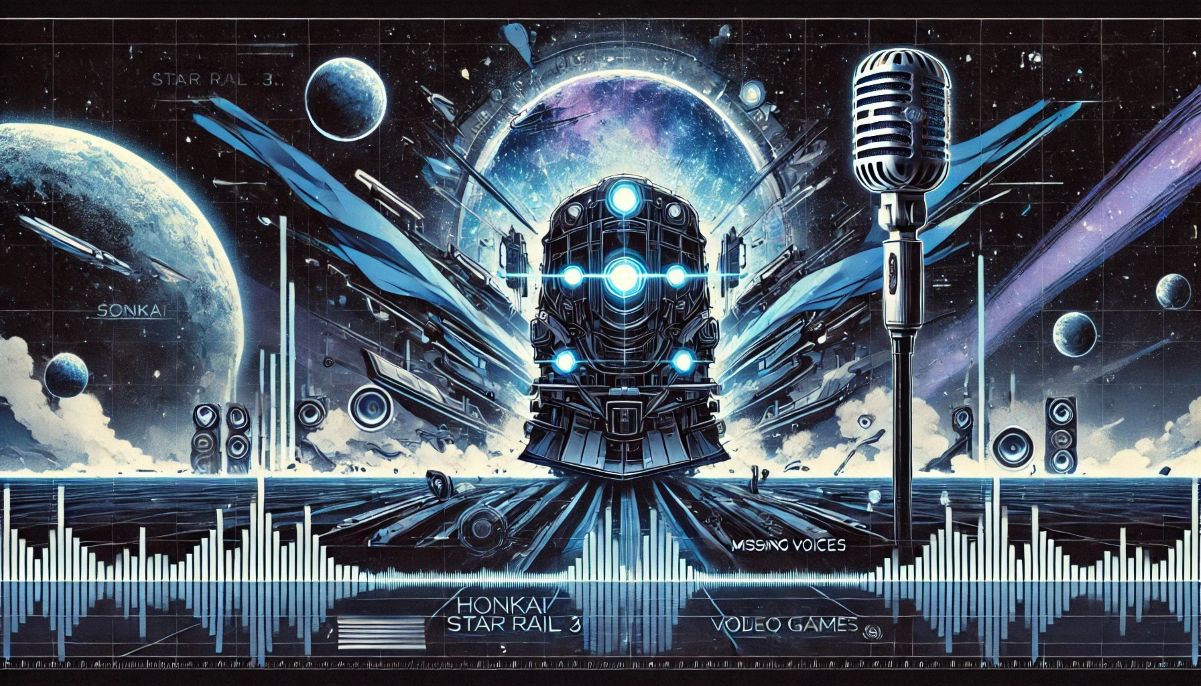Honkai Star Rail 3.0 rolled out with the promise of exciting new content, including the much-hyped Amphoreus region. However, players immediately noticed something off: certain characters and storylines featured missing or incomplete voice lines. Developer HoYoverse issued a statement blaming “unforeseen circumstances,” yet savvy fans quickly traced the issue to the ongoing SAG-AFTRA video game strike. Below, we examine the start of this major labor action, its most recent developments, and how the situation affects the voice actors for Honkai Star Rail 3.0.
The Beginning of the SAG-AFTRA Video Game Strike
The origins of the SAG-AFTRA video game strike date back to concerns that voice actors and motion-capture artists had been voicing for years—unpredictable working conditions, potentially hazardous sessions (like those requiring extended vocal strain), and a lack of residual compensation for successful titles. Negotiations between SAG-AFTRA (Screen Actors Guild – American Federation of Television and Radio Artists) and major video game companies first started making headlines in late 2016, leading to intermittent disputes.
Despite periodic resolutions, new problems emerged as game studios expanded into larger, more demanding productions. This expansion included advanced motion capture, recurring live-service content, and a push toward more cinematic storytelling. Voice actors felt their roles became more complex, warranting better compensation and safer working conditions. Talks between SAG-AFTRA and game publishers like Activision, Electronic Arts, and others continued sporadically until recent months, when disagreements over wage increases, AI usage, and secondary compensation reignited tensions.
On their official site, SAG-AFTRA details the core demands, including transparent pay scales and stronger voice protections. When negotiations reached a standstill, union members voted overwhelmingly in favor of a strike—this time specifically targeting video game productions. By the strike’s official start, it became clear any games in mid-production or post-launch content patches could suffer from a lack of union-based voice talent, effectively forcing developers to either recast roles, leave lines unvoiced, or revert to placeholders.
Latest Updates on the Strike
As of this writing, negotiations remain in flux. Various publications, including SAG-AFTRA’s press releases, note that a handful of producers have shown willingness to compromise on certain points, like improving vocal stress protections and clarifying AI usage for voice duplication or “voice matching.” However, residual pay remains a sticking point. Union members argue that the success of major AAA and live-service titles—some generating millions or even billions in revenue—warrants revenue sharing for the actors driving these experiences.
In the meantime, the strike’s continuation means union members are not legally allowed to perform voice work for game publishers or studios listed in the SAG-AFTRA complaint. While a few projects managed to secure interim agreements or short-term waivers, many others stand at a standstill in terms of voice recordings. For live-service titles like Honkai Star Rail, which rely on periodic updates featuring new story chapters, characters, and events, missing lines become increasingly evident as patches roll out.
Observers following the situation see a window of opportunity for both sides to reach a tentative agreement soon, potentially opening the door for SAG-AFTRA members to resume work and fill in the gaps in ongoing projects. Yet, until an official deal is reached, fans of multiple games—including Honkai Star Rail—will likely see placeholders or incomplete vocal performances in their next updates.
Why Honkai Star Rail 3.0 Is Missing Voices
According to sources like NoisyPixel, SI, and Dexerto, Honkai Star Rail 3.0 experienced voice-acting woes in part because the patch content lined up with ongoing strike conditions. In previous updates, the game introduced new story arcs with fully voiced dialogue for central characters, while side quests often featured partial or no voice overs. However, 3.0’s main narrative segment apparently lost not just optional lines but entire chunks of key dialogues for newly introduced NPCs and playable heroes.
Developers typically record voice lines weeks or even months before the actual patch release. By the time the SAG-AFTRA strike kicked into high gear, certain lines remained unrecorded or were in the middle of retakes. Since union actors had to step away from any struck project, the backlog of missing lines ballooned, leaving Honkai Star Rail’s production schedule in disarray.
Players began reporting that characters like Danu, a newly introduced 3.0 hero, spoke only partial lines in critical cutscenes. Elsewhere, entire quest chains defaulted to silent text boxes—an especially jarring contrast in a game known for high production values and dynamic voice performances.
The Star-Studded Voice Cast of Honkai Star Rail
While fans lament these missing lines, the Honkai Star Rail franchise still boasts a deep bench of talented voice actors—some union, some non-union—who bring its vibrant world to life. Even with the strike-related absences, many recognizable names fill the game’s voice roster:
Bryn Apprill as March 7th
A longtime contributor to anime dubs, Bryn Apprill lends a playful, curious edge to March 7th, the amnesiac adventurer whose cameras and comedic timing often lighten the game’s heavier plot points. Her performance underscores the easygoing camaraderie that defines much of the early Star Rail storyline.
Sean Chiplock as Dan Heng
Known for roles in The Legend of Zelda: Breath of the Wild and Persona 5, Sean Chiplock’s portrayal of Dan Heng accentuates the character’s stoic intelligence. Dan Heng’s arc—struggling to balance rationality with deeper emotional undercurrents—relies heavily on Chiplock’s nuanced vocal inflections, which now face possible disruption if union constraints persist.
Laura Stahl as Himeko
Having voiced characters in Genshin Impact and numerous anime series, Laura Stahl anchors Himeko’s confident tone. Himeko, a seasoned traveler on the Astral Express, mentors younger companions with a warm but firm approach. Stahl’s performance captures a balance of maternal empathy and hardened resolve.
Suzie Yeung as Silver Wolf
Often cast as cunning or mischievous types, Suzie Yeung brings a sharp wit to Silver Wolf, a skilled hacker and infiltration expert. Her lines drip with sarcastic quips and underlying tension, reflecting the moral ambiguity of Silver Wolf’s role in cosmic conspiracies. If the SAG-AFTRA strike affects future recordings, expansions to Silver Wolf’s story might see unvoiced or partially voiced content.
Additional Fan Favorites
Alejandro Saab – Known for heartfelt anime roles, he voices a comedic ally who crafts experimental gadgets for intergalactic missions.
Natalie Van Sistine – Portrays a mysterious NPC rumored to harbor secrets about the Amphoreus region’s hidden lore, with a voice laced with caution and dread.
What This Means for Future Updates
Should the SAG-AFTRA strike continue unabated, Honkai Star Rail players can expect further gaps in voice content for subsequent patches, particularly for newly introduced heroes or villains who rely on union talent. Moreover, established characters might arrive in story arcs with incomplete lines, as any re-recording or additional lines typically require the same union voice actors. For a story-driven game like Honkai Star Rail, partial or absent voice lines hinder immersion and hamper the emotional impact that epic cutscenes typically deliver.
On the other hand, if SAG-AFTRA and the game industry’s major publishers manage to negotiate a resolution, developers could quickly schedule new recording sessions—filling in existing blanks and ensuring more robust voice content in upcoming expansions. Players remain watchful of official social media channels and patch notes for news on reintroduced dialogue lines.
Until that agreement happens, fans will see some of their beloved characters speak in incomplete sentences or remain silent altogether. It’s a tangible reminder of the broader industry’s evolving labor landscape, where voice actors push for recognition and fair treatment in an entertainment medium that’s bigger than ever.
What Players Can Expect Going Forward
Despite the silence in select Honkai Star Rail 3.0 scenes, the broader community remains supportive of the strike’s goals, emphasizing that fair compensation and safe working environments benefit both actors and the quality of the games themselves. As negotiations unfold, fans are left with a wait-and-see approach—monitoring patch notes and social updates to learn if content updates down the line will contain fully realized performances.
For now, the missing lines in Honkai Star Rail 3.0 stand as a hallmark of an industry at a crossroads. Should developers and union leaders find common ground soon, players might eventually experience the story the way HoYoverse originally intended—complete with heartfelt dialogue, comedic banter, and epic monologues that define this cosmic odyssey.

